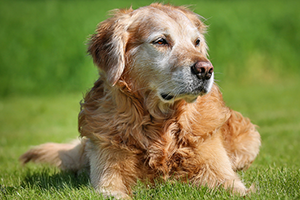Skin allergies in dogs: symptoms, causes and treatments

Quick Links
What are skin allergies?
Common causes of skin allergies in dogs
Airborne allergies
These can include seasonal allergens, such as pollen, as well as other hazards like house dust mites or mould that might be present all year round. As your dog inhales these airborne allergens, they can develop some of the symptoms listed below. Dogs that are allergic to airborne allergens may also show allergies to food and flea bites.
Certain breeds, including Labradors, Golden Retrievers and Boxers, are more prone to developing a sensitivity to airborne allergens. Dogs usually start to show these sensitivities when they’re between six months and three years old.
Flea allergy dermatitis
Contact dermatitis in dogs
Food allergies
Symptoms of canine skin allergies
The key signs of skin allergies generally manifest as an ‘ears and rears, feet and face’ pattern but can also include:
- Itchy skin and excessive scratching
- Overgrooming
- Redness or a rash
- Secondary skin and ear infections
- Weepy eyes
- Hot spots (acute moist dermatitis)
- Thickened or dark skin
- Hair loss (alopecia)
If you think your dog might have an allergy or other skin condition, it’s important to get them checked out by your vet. Don’t try to treat it yourself, or assume the problem will clear up on its own.
Treatments for dog skin allergies
Diagnosing skin allergies is tricky – but possible. Sometimes your dog’s symptoms may not be due to a genuine allergy, but irritation from mites and fleas. Think about whether their symptoms flare up at a certain time of year, or when you switched their food.
Deciding how to treat dog skin allergies will depend on their individual triggers and symptoms – we’ve outlined some of the most common options below.
Airborne allergens
These can be difficult to avoid, but allergy testing can help identify which substances in your dog’s environment are triggering a reaction. Avoiding exposure to the allergen can help, but if this isn’t possible, controlling your dog’s itching by regular bathing with a medicated shampoo can help.
Immunotherapy may also be offered for certain skin allergies in dogs. This means your dog will be given a custom-made vaccine containing specific allergens. The treatment is usually given monthly and your vet will be able to advise if this option will be suitable for your dog's specific circumstances.
Flea allergy dermatitis
Contact dermatitis
Food allergies
For food allergies, many dogs respond well to a limited-ingredient diet. This involves feeding your dog ‘novel’ ingredients that they haven’t eaten before. Once the allergen has been eliminated, symptoms should gradually reduce. Your vet can help develop a specific diet plan for your dog. Prescription diets using hydrolysed proteins can also offer a solution for dogs with food allergies.
Whatever you do, don’t ignore skin problems in your dog. Allergies can make them very uncomfortable, and often lead to even itchier secondary bacterial and yeast infections if left untreated. Once diagnosed, most allergies can be successfully managed, although you’ll probably need to continue treatment for the rest of your dog’s life.
Petplan is a trading name of Pet Plan Limited (Registered in England No. 1282939) and Allianz Insurance plc (Registered in England No. 84638), Registered office: 57 Ladymead, Guildford, Surrey GU1 1DB.
Pet Plan Limited is authorised and regulated by the Financial Conduct Authority. Financial Services Register No. 311969. Allianz Insurance plc is authorised by the Prudential Regulation Authority and regulated by the Financial Conduct Authority and the Prudential Regulation Authority. Financial Services Register No. 121849. Pet Plan Limited is a subsidiary of Allianz Insurance plc.
















